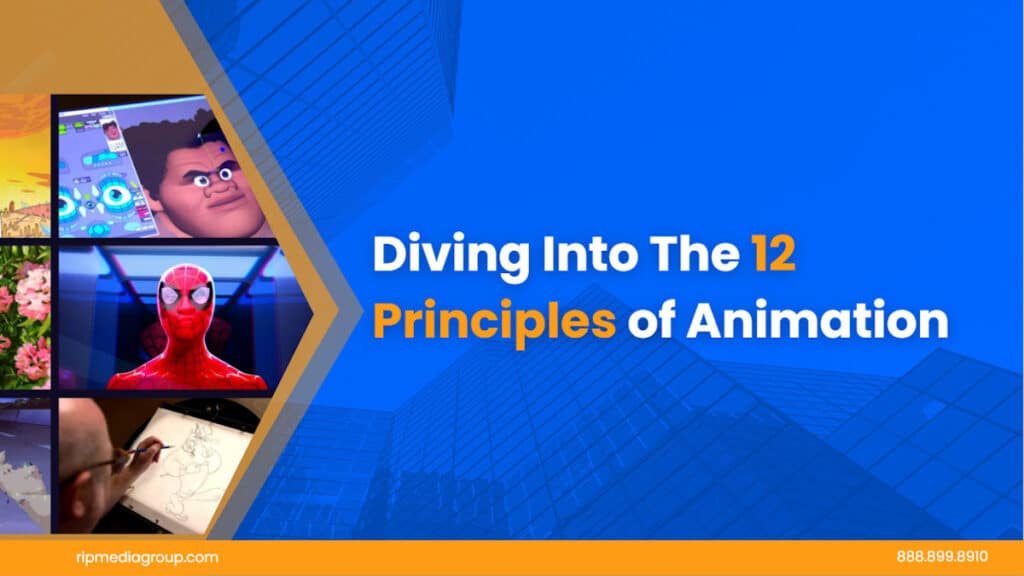Why is it important to understand the principles of animation?Well, because animation is one of the most powerful tools that can evoke strong emotions and tell engaging stories, and it’s important to understand how these captivating stories are structured and how our favorite characters are brought to life.
At it’s core, animation is the art of creating the illusion of life, and to achieve this, animators need to rely on a set of fundamental principles of animation, and these principles serve as the backbone of every animation, from classic cartoons to modern CGI.
So, let’s explore each principle:
1. Squash and Stretch
This principle is about exaggerating the form of an object in the animation, when it’s under presion (squash) and elongating it when it is released (Stretch), and this technique gives objects a sense of weight, flexibility and life. For example a bouncing ball squashes when it hits the ground and it stretches as it rebounds.
2. Timing
This principle refers to the number of frames between two poses, and it determinants the speed and rhythm of a determined action. It is essential to ensure proper timing when animating because it creates believable and engaging movement of characters. For example, a fast paced scene requires less frames between poses, while a slow movement needs more frames
3.Ease In and Ease Out
This principle of animation refers to how most natural actions start slowly, then accelerate, and then slow down again, and this is known as ease in and ease out, and it creates smooth and believable movement. It is the opposite to robotic movement, which involves constant speed.
4.Anticipation
Anticipation is giving the audience a clue about what’s about to happen next, this helps building tension and it makes the next action more impactful. For example, you see a character that’s about to jump, they will crouch down before leaping, and this creates anticipation for the jump.
5.Staging
Staging is directing the audience’s attention to the essential action in a scene, to achieve this you need to use different camera angles, lights, and specific character placement to highlight the most important elements in the scene.
6.Follow Through and Overlapping Action
When a character stops moving, different parts of their body continue to move at different rates, and this is known as follow through and overlapping action, it is one of the most important principles of animation. For example, a character’s clothes or hair keep moving for a second after the character stops walking.
7.Exaggeration
While realism is really important, exaggeration can be the best asset sometimes, because it can make animation more appealing and engaging, because by pushing the limits of our reality, animators can create more engaging characters that are also more expressive, but it’s also important to find a balance when you use exaggeration.
8.Solid Drawing
This principle of animation, highlights the importance of strong drawing skills that are needed for animation, whether you’re working on 2D or 3D animation, you need a strong understanding of anatomy, weight and most importantly perspective to create real scenarios that are not weird looking.
9.Arcs
The most natural actions follow curved paths or arcs, and applying arcs to animations creates a more fluid and natural scene, an example of this can be the movement of a human arm, we don’t move in straight lines, and curves help replicate our natural movement.
10.Secondary Action
This principle refers to the subtle movements that support the main action, and these actions add depth and realism to the animation. For example a character’s hair can sway while they walk.
11.Straight-ahead action and pose to pose
The straight ahead principle refers to animate your action from the first drawing to the end in order, while the pose to pose technique means drawing the key poses first that are often at the beginning and end of the animation.
12.Appeal
Appeal is about creating characters that are relatable and interesting for the audience, and it is a combination of design, personality and charisma. A character with appeal will capture the audience’s attention and evoke emotions in them. Here you can check examples of engaging animations
BY mastering these 12 principles, any animator can bring characters to life and weave engaging stories that will capture audiences’ attention. Each principle contributes to the overall effectiveness of the animation, and all of the principles are equally important to create a realistic and enjoyable animation.
Professional Animation
Our professionals at Rip Media Group, can create just the right animation you need, we count with over a decade of experience and have worked with the most respected companies like Cisco Systems, LexisNexis, Ben & Jerry’s and more. We offer the best prices in the market and the highest quality you’ll find.
So, let’s get talking. Contact Us and let’s make the animation video you need together.
And, if you think I’ve spilled all the beans, you’re mistaken. Dive into our treasure trove of insights and arm yourself with knowledge that’s as cutting-edge as that fancy razor you bought but never used. Cheers!

